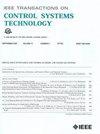按需自主移动系统中车辆重新定位的分层控制
IF 3.9
2区 计算机科学
Q1 AUTOMATION & CONTROL SYSTEMS
引用次数: 0
摘要
平衡乘客需求和车辆可用性对于确保城市交通系统的可持续性和有效性至关重要。为了应对这一挑战,我们提出了一种新的分层策略来有效地分配城市地区的空车。该方法采用数据支持预测控制(DeePC)算法开发高级控制器,指导闲置车辆的区域间分配。该算法利用每个区域的乘客需求和车辆供应的历史数据来构建系统的非参数表示,使其能够确定在当前区域重新定位或保留的最佳车辆数量,而无需对系统进行建模。在低层次上,设计了一个基于覆盖控制的控制器,提供区域间的位置引导,确定每辆车应该瞄准的理想道路交叉口。以优化区域覆盖为目标,它使车辆分布与单个区域内不同区域的需求保持一致。通过深圳实际路网的仿真实验,验证了该方法的有效性。与单独应用任何一层相比,两层的集成提供了更好的性能,显示了其减少乘客等待时间和响应更多请求的潜力,从而促进了更高效和可持续的交通系统的发展。本文章由计算机程序翻译,如有差异,请以英文原文为准。
Hierarchical Control for Vehicle Repositioning in Autonomous Mobility-on-Demand Systems
Balancing passenger demand and vehicle availability is crucial for ensuring the sustainability and effectiveness of urban transportation systems. To address this challenge, we propose a novel hierarchical strategy for the efficient distribution of empty vehicles in urban areas. The proposed approach employs a data-enabled predictive control (DeePC) algorithm to develop a high-level controller, which guides the inter-regional allocation of idle vehicles. This algorithm utilizes historical data on passenger demand and vehicle supply in each region to construct a nonparametric representation of the system, enabling it to determine the optimal number of vehicles to be repositioned or retained in their current regions without modeling the system. At the low level, a coverage control-based controller is designed to provide inter-regional position guidance, determining the desired road intersection each vehicle should target. With the objective of optimizing area coverage, it aligns the vehicle distribution with the demand across different districts within a single region. The effectiveness of the proposed method is validated through simulation experiments on the real road network of Shenzhen, China. The integration of the two layers provides better performance compared to applying either layer in isolation, demonstrating its potential to reduce passenger waiting time and answer more requests, thus promoting the development of more efficient and sustainable transportation systems.
求助全文
通过发布文献求助,成功后即可免费获取论文全文。
去求助
来源期刊

IEEE Transactions on Control Systems Technology
工程技术-工程:电子与电气
CiteScore
10.70
自引率
2.10%
发文量
218
审稿时长
6.7 months
期刊介绍:
The IEEE Transactions on Control Systems Technology publishes high quality technical papers on technological advances in control engineering. The word technology is from the Greek technologia. The modern meaning is a scientific method to achieve a practical purpose. Control Systems Technology includes all aspects of control engineering needed to implement practical control systems, from analysis and design, through simulation and hardware. A primary purpose of the IEEE Transactions on Control Systems Technology is to have an archival publication which will bridge the gap between theory and practice. Papers are published in the IEEE Transactions on Control System Technology which disclose significant new knowledge, exploratory developments, or practical applications in all aspects of technology needed to implement control systems, from analysis and design through simulation, and hardware.
 求助内容:
求助内容: 应助结果提醒方式:
应助结果提醒方式:


